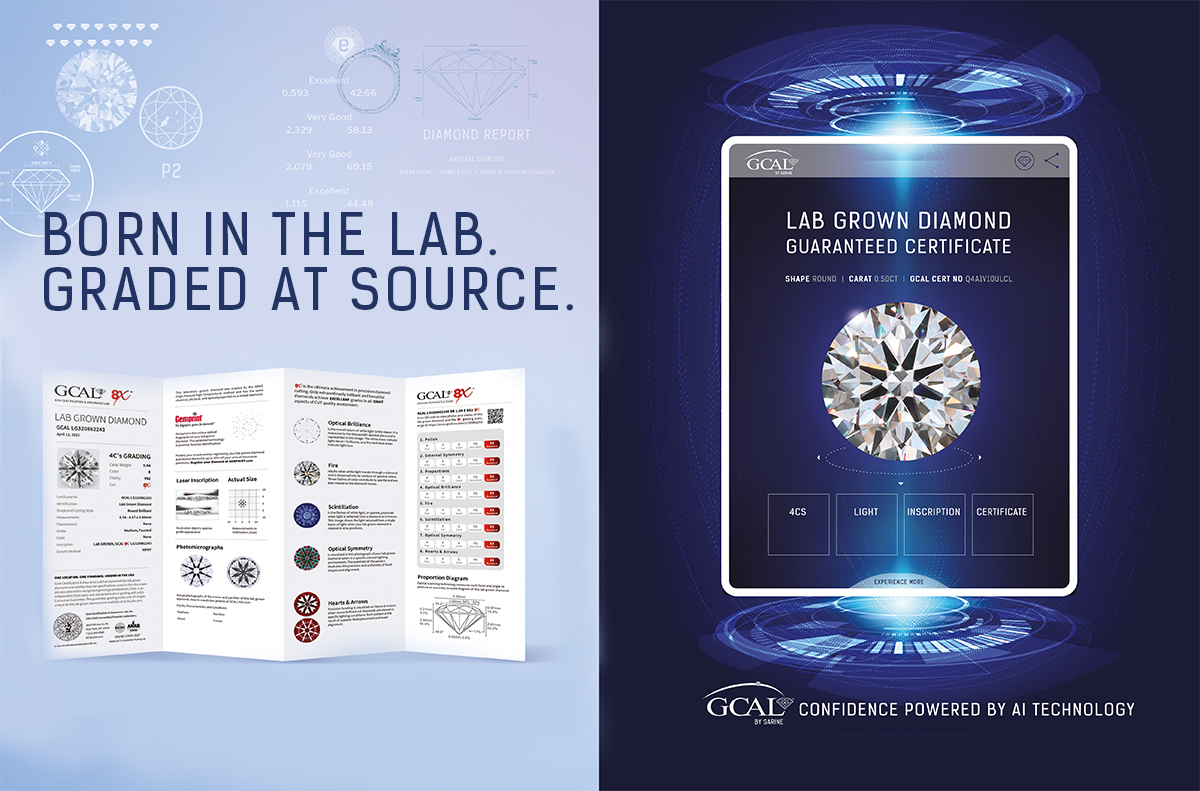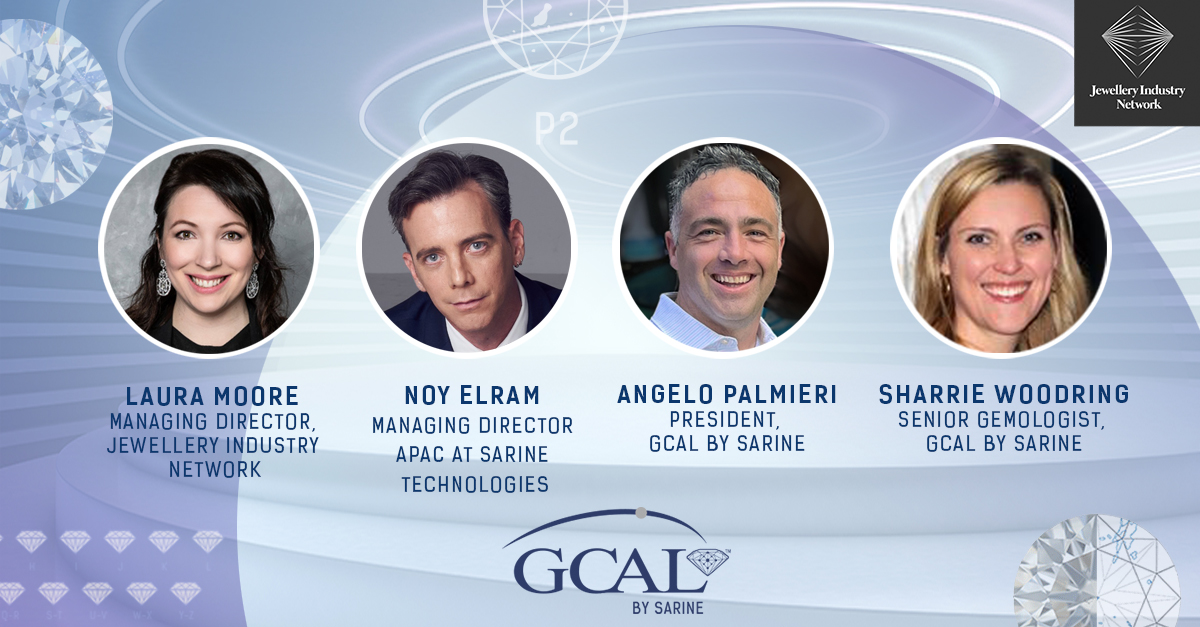Today, we’re giving a detailed recap of the latest webinar Sarine participated in titled ‘Lab Grown Diamonds 101: Discovering the Science, Certification, and Market Trends’. Organized and hosted by the Jewellery Industry Network’s Managing Director Laura Moore, the webinar sees Angelo Palmieri, President of GCAL by Sarine, Sharrie Woodring, Senior Gemologist at GCAL by Sarine, and Noy Elram, Managing Director, APAC Sarine have an in-depth conversation on lab-grown diamonds. Here’s a rundown of what they covered.
Lab Grown Diamonds: A Brief History
The webinar kicks off with Sharrie Woodring presenting a brief history of lab-grown diamonds. It’s been a century since the first notion of LGDs has been raised, however, things didn’t really begin taking off until twenty years ago. Since then, the quality of LGDs has skyrocketed on a yearly basis. As of 2023, the improvements are still racking up continuously and interest in these gems is stronger than ever.
CVD or HPHT
When it comes to LGD growing methods, there are two widely used techniques. Those are CVD and HPHT, and both come with a unique set of characteristics and pros and cons that can have a profound impact on the diamond itself. Let’s take a deeper look.
- CVD – Chemical Vapor Deposition
The CVD method grows a diamond in layers and specializes in growing larger stones with color hues that closer resemble natural diamonds. This method sees a diamond seed being placed in a vacuum chamber, which becomes filled with carbon-rich gases and is heated up to nearly 1,500 degrees. With the drastic increase in temperature, the gases turn into plasma, which releases in carbon pieces.
Usually, when getting a closer look at CVD stone, one can see evidence of the diamonds layered growth. Often left in the diamond are clouds and fog, which stem from the method it was grown.
- HPHT – High Pressure High Temperature
The investment cost for HPHT growth is higher than CVD. This method specializes in the creation of melee diamonds. The diamond creating process begins when a chamber is heated to about 1,600 degrees and is accompanied by pressures above 870,000 per square inch. The molten metal dissolves the carbon source and carbon atoms begin growing on small diamond seeds.
This growing method will usually produce a diamond with a slightly yellowish hue and can also result in some darker inclusions within the diamond, which can be metallic.

Trends Within the LGD Sphere
Next Angelo Palmeri gave a deep elaboration on the rising trends within the LGD sphere. Since 2020, things have shifted drastically in terms of lab-grown gems, especially with the increased level of experimental potential they present. Where round shapes once accounted for the most submissions, there has now been a new and increased demand for fancy-shaped stones. The round shape is now accounting for a minority of GCAL’s submissions.
Continuing with trends, LGDs also enable consumers to get custom-shaped diamonds, which are extremely popular at the moment. The video displays two beautiful-looking diamonds. One that is cut in the shape of the state of Texas and another one shaped like a teddy bear.
These trends go hand in hand with the attention to detail many premium manufacturers are putting into their diamonds’ polishing and cutting. This also comes with the manufacturing trend of using many of the industry’s most cutting-edge, AI-based manufacturing solutions. There are even improvements in clarity and color. When it comes to clarity, LGDs are graded between IF and I3, with a stiff majority for both CVD and HPHT being given a grade of VS1 and VS2.
Lab-Grown Market in China
Noy Elram Sarine APAC Managing Director took the audience overseas and discussed the ever-expanding lab-grown diamond market in China. When it comes to LGDs, China accounts for 30% of global production, which is at a value of 400 million USD. However, when it comes to a consumer base, the country is still in its early stages, as they are accounting for only 5% of LGD retail consumption. However, a giant shift has begun to take place.
When it comes to pushing LGDs, China is very much focused on the modern consumer and is marketing LGD diamonds to them by way of a very futuristic approach. To further display this market shift, Noy revealed that in 2023, China Gold is set to open one thousand LGD retail locations. This is on top of other retail giants embracing LGDs in the years prior like DEINO and Light Mark.

Closing Thoughts…
Given the huge impact that lab-grown diamonds are currently having across the globe and the flexibility they enable in terms of experimentation, we can expect to see their shine sparkle even brighter in the years to come. No doubt, this is an extremely exciting and revolutionary time for everyone in our industry and LGDs are a huge part of it.
For the complete webinar CLICK HERE!




-1.jpg?width=310&name=blog_image%20(003)-1.jpg)





